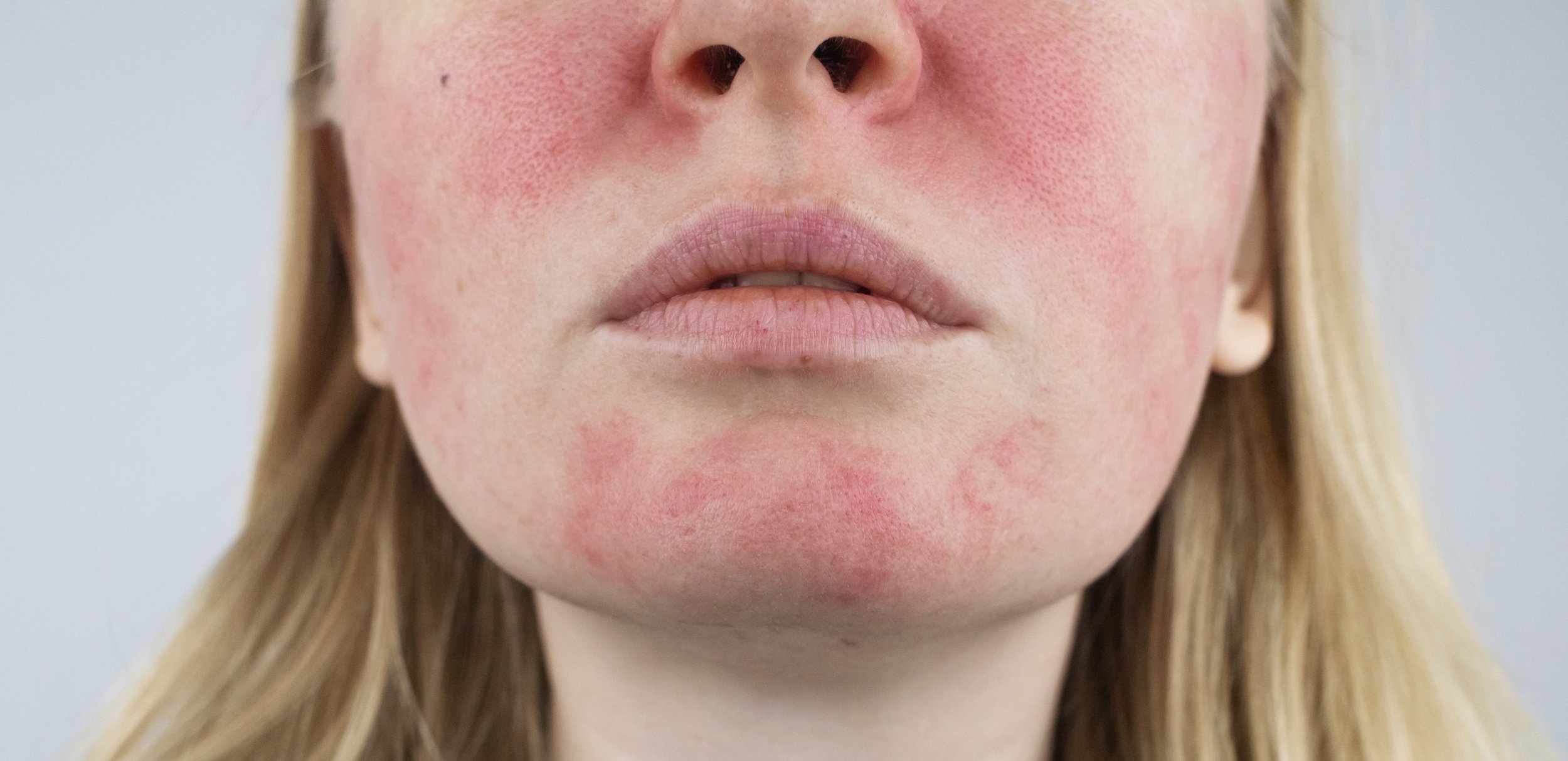Rosacea
ROSACEA
Rosacea is a common and chronic skin disorder characterized by facial redness, visible blood vessels, and inflammatory skin lesions. It primarily affects the central part of the face, including the cheeks, nose, forehead, and chin. Rosacea can manifest in various forms and severity levels, ranging from mild flushing to persistent redness and visible bumps or pimples.


SYMPTOMS
Facial redness: The most prominent symptom of rosacea is persistent facial redness, which can appear as flushing, blushing, or a general background redness. The redness may come and go but is typically triggered by certain stimuli such as sunlight, heat, alcohol, spicy foods, or emotional stress.
Visible blood vessels: Over time, small blood vessels (telangiectasia) may become visible on the skin surface, especially on the cheeks and nose. These blood vessels appear as thin, red lines and contribute to the overall redness and flushing associated with rosacea.,
Inflammatory skin lesions: Some individuals with rosacea experience papules and pustules resembling acne. These inflammatory lesions may be tender and often develop in clusters, leading to a bumpy or swollen appearance. Unlike acne, however, there are usually no blackheads or whiteheads present.
Thickening of the skin: In advanced cases, rosacea can cause the skin to thicken, particularly on the nose (known as rhinophyma). This leads to a bulbous and enlarged nose with a rough texture.
Eye symptoms: Approximately 50% of individuals with rosacea may experience ocular symptoms, such as dryness, grittiness, burning or stinging sensations, redness, and sensitivity to light. In some cases, these symptoms may precede or occur independently of facial skin symptoms.
TREATMENT
Your provider at Skin Care Specialists will design a custom treatment plan that is best for you! The treatment plan depends on the specific symptoms and severity of rosacea, and may include:
Topical medications: Prescription creams or gels containing ingredients like metronidazole, azelaic acid, or brimonidine can be applied directly to the affected skin to reduce redness, inflammation, and bumps, Oral medication, Laser and light therapies, Trigger avoidance, and or modifications or additions to Skincare regimens.